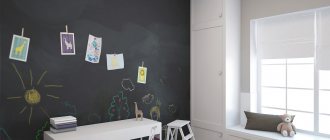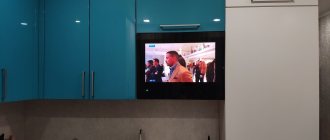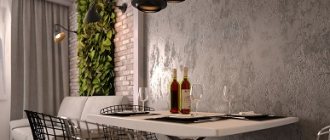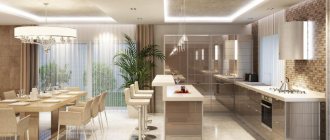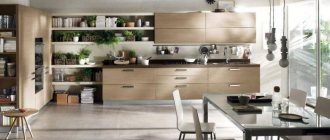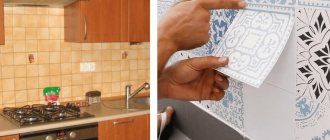When choosing flooring for your kitchen, you need to take into account a lot of nuances - ease of cleaning, resistance to abrasion and moisture, and much more. How to choose the right coating, and what do you need to remember?
Initially, you should answer the main questions :
- What exactly do you want?
- How much coverage is there in the budget?
- Which coating will be optimal for the existing or proposed interior?
- Does the chosen option suit the requirements for kitchen flooring?
- Do you mean warm floors, or will you make do with regular ones?
- Will one material be used as a coating, or is it intended to combine materials?
- Do you need a visual increase in space, or is your kitchen of sufficient size to choose the color of the flooring without restrictions?
Practical floors in the kitchen - properties that a kitchen floor should have
- Hygiene. Easy cleansing from dirt and grease. Possibility of using aggressive detergents.
- Moisture resistant. After the bathroom, the kitchen is the second room actively exposed to water.
- Wear resistance. Abrasion resistance. Reliability, quality and durability of the coating.
- Impact resistance. Not any coating will withstand a saucepan or cast iron cauldron falling onto the floor.
Of course, not every coating meets all these requirements. But you also need to remember about the presence of a suitable base, as well as the aesthetics and compliance of the coating with the overall appearance of the kitchen. Therefore, it is better to understand the types of flooring and their properties in advance.
Features of wooden floors for the kitchen
Floor coverings operate in harsh conditions, so they must withstand significant vertical loads, be resistant to moisture, temperature changes and abrasion. Wooden floors satisfy all requirements except moisture resistance. Laying wooden floors with your own hands provides the following advantages :
- environmental Safety;
- good heat and sound insulation;
- vapor permeability;
- relatively simple technology and minimal waste during laying.
Disadvantages include:
- fire hazard;
- insufficient resistance to moisture, fungal diseases, mold;
- tendency to dry out.
Based on the above, it is easy to determine the area of definition for wooden floors - kitchens and living rooms with normal moisture levels.
Parquet and parquet boards in the kitchen - in practice for housewives
What to remember?
Moisture-resistant wooden parquet, which is produced using new unique technologies, is not afraid of moisture. Neither a parquet board, nor even a two-layer parquet will suffer even from a sudden flood in the kitchen (if, of course, the consequences of the flood are immediately eliminated). When choosing parquet, pay attention to hardwood flooring - they are highly wear-resistant and durable. The parquet board must be treated with a composition that prolongs the durability of the material. Also, a thick layer of high-quality varnish will protect the tree from various negative influences. Advantages of parquet, parquet boards
- Wooden floors provide natural warmth in the kitchen.
- Wide selection of wood species, colors and board laying options.
- Additional comfort in the home.
- Ecological cleanliness.
Disadvantages of parquet, parquet boards
- Despite the moisture resistance of modern parquet boards, it is advisable to protect the coating from excessive exposure to moisture.
- Heavy or sharp objects falling on the parquet leave marks, and the coating has to be restored.
- High price.
Laminate floors in the kitchen and dining room
A worthy alternative to a wooden floor in the kitchen can be laminate . Of course, in terms of environmental friendliness it is inferior to wood and cork; it also has many advantages. It is more resistant to scratches and other external influences.
Tarkett
Laminate can imitate all types of wood, including precious and exotic ones. Some types of laminate quite successfully imitate even granite, marble and tiles. Another important property of laminate is that it allows you to create heated floors in the kitchen. At the same time, it is quite affordable. The weak point of laminate is that it is susceptible to high humidity. When laying it, it is very important to make high-quality waterproofing of the screed. If the floor in your kitchen is made of laminate, you will have to constantly ensure that excess liquid does not get on it. As an option, you can use a moisture-resistant laminate with increased water repellency.
Regarding the environmental safety of laminate, it is important to choose products from manufacturers with a long history and good reputation. Experts advise that when purchasing, be sure to ask the seller for instructions and a hygiene certificate, and also pay attention to the premises for which a particular type of laminate is intended.
A whole series of articles has been published on our website about laminate. I recommend starting with the material about the intricacies of choosing this floor covering, and to continue the topic, I advise you to read review posts about moisture-resistant and water-resistant laminate floors.
Cork flooring for the kitchen - natural flooring
Benefits of coverage:
Environmentally friendly.- Natural warmth of the coating.
- Softness.
- Resistant to moisture, rotting and swelling.
- Easy to clean.
- Antistatic.
- No traces after a heavy object falls on the coating.
- Variety of textures.
Disadvantages of cork for the kitchen
- Despite a lot of positive properties, cork flooring can be damaged by sharp objects, hot fat and floods. You can avoid this if you purchase a cork sheet protected with a varnish (wax) coating.
- A varnish or wax coating, in turn, spoils the natural feel of a cork floor.
- An MDF-based cork floor lasts several times less than a pure cork floor.
- High price.
Types of flooring for kitchen floors
When the question arises about flooring for the kitchen, and what is best, then from the numerous options you should choose those that are suitable for a particular apartment. The tastes of the residents also play an important role. For a cold room where you plan to install a heated floor, you will need a coating that can withstand temperature changes. Financial capabilities also play an important role.
Tile
One of the most popular coatings is ceramic tiles. This is the first thing that comes to mind when the question arises of what is best to lay on the floor in the kitchen. The material is practical, easy to use and inexpensive.
Pros of ceramic tiles:
- Strength.
- No electrical conductivity.
- Hygiene.
- Big choice.
- Resistant to ultraviolet rays.
- The ability to withstand the effects of household chemicals without damage.
- Environmentally friendly.
- Quick repair of one or more tiles.
- Easy to care for.
- Ability to support the weight of kitchen furniture without leaving marks.
- Imitation of natural materials (natural stone, wood).
Flaws:
- Cold surface.
- Possibility of cracks from the impact of falling objects.
- The need for special tools when installing yourself.
Tiles come in plain colors and with abstract or geometric patterns. It can be laid in several ways: parallel, diagonally, in a checkerboard pattern.
The basic rule for caring for ceramic tiles is the frequency and regularity of cleaning. Instruments and accessories you will need:
- vacuum cleaner;
- soft brush;
- soft cloth or napkin;
- basin or bucket.
Attention ! You cannot use a brush with hard, much less iron, bristles to care for ceramic tiles.
You should be careful when choosing a detergent. Do not use household chemicals containing chlorine. Abrasive detergents leave scratches on the tiles, which gradually increase.
Before you start washing, you need to vacuum the surface, moisten a soft cloth in a non-aggressive detergent and wipe the floor surface, rinse with warm water, to which ammonia has been added to make the surface shine. The last stage is drying the floor covering. After this, it is advisable to apply a protective layer of special compounds to the tile.
Laminate
A good solution to the question of which flooring is best to choose for the kitchen is laminate.
Advantages of using this material:
- Warmer than ceramic tiles.
- Possibility of installing heated floors.
- No traces of heavy furniture.
- Resistant to temperature changes.
- Wear resistance.
- Moisture resistance.
- Resistant to fading.
- Large selection of colors.
- Easy to care for.
- Easy to install.
- Long service life.
Disadvantages of laminate:
- Bloating and swelling under the influence of large amounts of moisture.
- Damage from falling objects.
- Lack of resistance to aggressive agents.
- Attraction of dust.
- Difficulty in removing paint stains.
- Accumulation of static electricity.
- Great demands on the foundation.
There is a laminate that has increased moisture resistance. It is best suited for the kitchen.
When purchasing, you should pay attention to the following characteristics:
- Wear resistance . The load that the coating can withstand depends on this value. For the kitchen, laminate class 33 or higher is recommended.
- Moisture resistance. The markings should include images of water droplets and a tap.
- Thickness _ For the kitchen, this parameter is at least 9 mm.
- Noise absorption . For expensive types, the sound-absorbing layer is 1-2 mm. If it is not available, this substrate can be purchased in addition.
- Anti-slip surface . A rough laminate with a textured surface is selected.
Recommendation ! If water gets on a laminate floor, it is necessary to quickly dry the coating.
When purchasing, you need to ask for a certificate and clarify how suitable this type is for the kitchen. You need to purchase coverage with a 5% margin.
Dry cleaning involves sweeping the floor and vacuuming it regularly. Wet cleaning should be done once a week. You can wash with ordinary water at a temperature of +40/+50°C.
Linoleum
Linoleum is the most common flooring material, including in the kitchen. A practical option is either artificial PVC or natural, which has many modifications in texture and color. Available matte and polished, with imitation of parquet, wood, stone.
Advantages of linoleum:
- Wear resistance.
- High thermal insulation.
- Soundproofing.
- Easy to care for.
- Possibility of installation on your own.
- A large number of colors and patterns.
- Imitation of natural materials.
- Moisture resistance.
- Resistant to temperature changes.
- Resistance to detergents.
- Compatible with installation of heated floors.
- Affordable price.
- Long service life.
Disadvantages of coverage:
- Synthetic base.
- Punching under static loads from heavy kitchen furniture.
- Deformation in places where moisture accumulates.
- Fading due to exposure to sunlight.
When purchasing, you should carefully study the labeling and operating instructions. This will protect you from purchasing linoleum, which cannot be used in residential premises. A sharp, specific smell indicates that the material is of low quality. A semi-commercial type that has sufficient abrasion resistance for this room is suitable for the kitchen.
Linoleum floors require constant care. Any type of it should not be exposed to aggressive cleaning substances. Various alkalis, including caustic soda, can corrode the base. When washing, do not use too hot water. Paint stains are quickly removed.
In the first days after laying linoleum, you should refrain from wet cleaning. It is enough to sweep or vacuum it regularly. For washing, use only soft cloths. Water changes as it becomes polluted.
Porcelain tiles
An artificial floor covering called porcelain stoneware has excellent characteristics. Its composition is close to tile, but a special manufacturing technology gives it the properties of natural stone. The performance properties of porcelain stoneware are higher than those of many other floor coverings.
The advantages of porcelain stoneware include:
- High strength.
- Hardness.
- Wear resistance.
- Low water absorption.
- Environmentally friendly.
- Attractive view.
- Imitation of various natural materials.
- Durability.
Disadvantages include:
- Heavy weight.
- Difficult to install.
- High price.
- Cold surface.
Porcelain tiles are easy to clean from dirt. This is due to its resistance to chemical cleaning agents. Minor dirt can be removed with a slightly damp soft cloth. It is possible to use products based on acids and alkalis. It is advisable not to resort to abrasive products.
A natural stone
Natural stone in the kitchen can be considered a luxury item; this coating will suit any style and easily fit into the interior of the kitchen, combining with other finishing materials. The most common types are marble and granite.
Floor stone has the following advantages:
- beautiful appearance;
- rich color range;
- high strength;
- abrasion resistance;
- long service life.
The disadvantages include:
- high price;
- insufficient heat retention;
- complexity of installation;
- heavy weight.
Everyday cleaning requires regular water, a mop and detergent. For severe contamination, use special cleaning agents designed for stone. They must be diluted in water according to the instructions.
Wooden floor
Natural wood floors look beautiful and rich. It will ideally complement an interior made in a classic or country style. But it is better to place it in the dining area, because temperature changes and high humidity will negatively affect the wooden covering.
Boards treated with oil, varnish or other special compounds become stronger.
Wooden floors require constant maintenance. It is best to do dry cleaning using a vacuum cleaner.
When cleaning wetly, rags must be wrung out thoroughly. Specialized tools will help you avoid unnecessary effort.
Suberic
For connoisseurs of environmentally friendly materials, cork flooring is perfect. This coating is made from oak bark. Cork is comfortable, creates warmth when walking, has high soundproofing, and the material is non-slip.
Pros of cork flooring:
- stain resistance;
- softness;
- easy care;
- environmental friendliness;
- soundproofing;
- heat preservation;
- no scratches due to porosity;
- moisture resistance;
- long service life.
The disadvantages are the high cost and complexity of installation. Cleaning cork floors in the kitchen is easy. Special cleaning agents are used.
Self-leveling floor
Liquid linoleum is otherwise called self-leveling flooring. It is unpretentious in operation. Self-leveling floors are not susceptible to mechanical damage. The surface is smooth, without seams or joints, and can be of any color. When poured, it is easy to decorate; craftsmen create optical effects (water surface, green grass, etc.).
The self-leveling floor does not emit harmful substances. The advantages include moisture resistance and strength. Dry and wet cleaning will not require much effort.
Ceramic and stone floor tiles - is it worth laying tiles in the kitchen?
Advantages of ceramic and stone tiles
Solid overall appearance.- High moisture resistance - tiles are not afraid of water.
- The tiles are also resistant to chemicals, hot splashes of grease and sun rays.
- The tile is not subject to deformation.
- Cleaning is not difficult - the tiles are easy to clean.
Disadvantages of ceramic coating
- Ceramic tiles are susceptible to impacts from heavy objects. She will not survive the fall of a hammer or a cauldron.
- Dishes that fall on the tiles will break in 99% of cases.
- Stone tiles are more impact-resistant, but the disadvantage here is their high cost.
- The stone and ceramic floors are cold on your feet. If you are used to walking barefoot, then for this covering you should purchase slippers, a moisture-resistant rug or a heated floor system.
What should you remember when choosing ceramic and stone coatings?
- When choosing tiles for the kitchen, look for options with a surface such that your surface does not turn into a skating rink when preparing food.
- If you have children in your house, or you are simply worried that you might accidentally drop something, then buy tiles with a reserve. In case of damage, replace the chipped element using liquid nails.
Laminate in the kitchen - cheap or cheerful?
Advantages of laminate flooring for the kitchen
Wide choice of colors (wood, tile, etc.).- High temperature resistance.
- Low cost.
- Ease of replacing the material in case of accidental damage to the laminate.
Disadvantages of laminate flooring for kitchen floors
- Synthetic coating (not natural).
- Swelling with large volumes of moisture.
- Easily damaged when heavy objects fall or furniture moves.
- Afraid of exposure to aggressive chemicals.
- It is difficult to wash off grease and dyes.
- Collects dust quickly.
Linoleum for kitchen floors - an economical and sustainable coating
Advantages of linoleum for kitchen floors
High moisture resistance.- Abrasion resistance.
- Immunity to falling heavy objects.
- Low cost.
- Softness and heat retention are higher than laminate.
- Easy to clean.
- Not afraid of grease and dirt.
- Wide choice of designs.
Disadvantages of linoleum for kitchen floors
- Afraid of hot objects and high temperatures.
- Easily deformed in places where moisture accumulates.
- Does not like aggressive cleaning with chemicals (it spoils the appearance).
- It breaks from heavy furniture, refrigerator, etc.
- Excellent dust collection.
- Fades over time when exposed to the sun.
- Inconvenient styling.
Of course, all these disadvantages apply more to vinyl coverings. Natural linoleum (marmoleum) is very durable and environmentally friendly. It has antistatic qualities, is not subject to rotting, and there are no traces left on it after moving furniture. But it also costs significantly more than its synthetic “copy”.
Kitchen floor requirements
The kitchen is a specific room . When choosing what to lay on the floor in the kitchen, you need to take into account the number of family members who walk on this surface every day. Mechanical damage from sharp and blunt objects (knives, furniture) is inevitable.
For the kitchen, it is best to choose a moisture-resistant coating that does not suffer due to frequent cleaning and exposure to detergents designed to combat grease.
The floor covering should be combined with the overall style of the kitchen. The choice of color depends on the size and height of the room. A light floor will visually increase the space of a small kitchen, and a black floor, if it matches the overall style, will add intrigue. The size of the picture also plays a role. The rule here is simple: a large pattern is suitable for a large kitchen, a small one is suitable for a small one.
PVC tiles for the kitchen floor - a floor covering that is easy to install and use
Essentially, this is the same linoleum, but cut into strips or tiles. Accordingly, the main advantages and disadvantages are similar to the properties of linoleum. Advantages of PVC tiles for kitchen floors
The presence of an adhesive base provides quick and convenient fastening.- Easy replacement of tiles in case of damage.
- Easy to combine compared to roll linoleum.
- Imitation of expensive material for little money.
- The material is pleasant to the feet.
Disadvantages of PVC tiles
- A large number of seams after installation, into which moisture then gets in. As a result, the tiles peel off and the flooring loses its aesthetic appearance. To avoid this, all seams should be treated with a moisture-proof compound.
- Over time, swelling at the edges may occur.
- Damaged by falling sharp objects.
- Fades in the sun.
- Short service life.
Cement - durable flooring for the kitchen
Advantages of cement coating
Variety of surfaces. Not only the boring gray color, but also the pattern, specks, etc.- Ideal for hot climates (the floor is always cold).
- High wear resistance. You can even say “indestructible”. Such coating can only be damaged by an explosive device.
- An ideal base for another coating if you get tired of concrete.
Disadvantages of cement coating
- Cold floor. You won't be able to walk barefoot.
- Difficult installation. You can't do it without professionals.
- Porosity. And, accordingly, the need to create a special coating to protect against stains.
Bamboo flooring in the kitchen - convenient or just fashionable?
Benefits of bamboo flooring
Environmentally friendly.- Strength, elasticity.
- Wear resistance.
- Affordability compared to solid wood.
- Beautiful surface pattern.
- Does not require complex care.
Disadvantages of bamboo flooring
- Small assortment of colors.
- Less high resistance to moisture compared to other materials.
- Risk of deformation due to high humidity.
Laying laminate flooring on a kitchen floor
Laminate is a floor covering that is highly resistant to moisture. It is most often made from high-strength fiberboard, which swells when exposed to moisture and loses its original characteristics. This can be prevented by a special coating that makes the floor surface waterproof, durable, resistant to external damage and mechanical stress.
Laminate types
Most often, panels of 32 or 33 wear resistance classes are laid on the kitchen floor, the special structure and locking of which ensure practicality and long-term operation during intensive use. Laminate made from natural cork, which has a soft texture and can retain heat in a room, is no less popular.
PVC-based laminate is also in demand because it has high noise absorption, thermal conductivity, and resistance to high humidity. Its waterproof base prevents swelling of the floor covering and its subsequent rotting.
Advantages of materials
Modern coating for the kitchen allows you to give the interior individuality, fill it with comfort and warmth. Each type of flooring material has the following advantages:
- laminate on a plastic base is easy to install - the absence of a chamfer allows it to be mounted on the floor without gaps, which ensures the safety of the structure and outer layer in case of accidental spillage of liquid. The coating is highly wear-resistant, has a wide variety of colors, absorbs noise well and withstands external damage;
- the natural cork coating is completely safe for human health, its surface is treated with a special composition that protects the internal structure from the penetration of moisture and various types of mechanical influences;
- Fiberboard laminate copes well with high humidity, thanks to the presence of special treatment of connecting locks and a protective epoxy layer located at the top and bottom. It is because of practicality, durability and wear resistance that this material is so often chosen for flooring.
Should I put carpet on the kitchen floor?
Advantages of carpet covering
- Pleasant to the touch.
Disadvantages of coverage
- Difficulty in cleaning. Washing grease or spilled soup from carpet is very difficult.
- When wet, carpet takes a very long time to dry and even begins to rot.
- Excellent dust collection.
- Harmful for asthmatics.
In short, carpet is the worst flooring you can choose for your kitchen. If the desire to walk barefoot on “soft” surfaces even in the kitchen is irresistible, then there is always an option such as a carpet or a separate piece of carpet . If it gets dirty, it can be washed and dried on the balcony.
Carpet
The soft carpet allows you to comfortably move around the kitchen even barefoot. It is laid all over the floor or combined with other materials, including parquet and tiles.
The advantages of carpet include:
- ease of installation;
- good sound insulation;
- possibility of combination with other materials;
- environmental cleanliness and health safety;
- ease of care;
- affordable price.
However, the coating also has some disadvantages:
- has low moisture resistance;
- accumulates dust, provides a comfortable environment for the proliferation of pathogenic microbes and small insects;
- does not tolerate sudden temperature changes.
The kitchen carpet can be natural or artificial. In the first case, it is made with 100% natural wool or combined with plant fibers: flax, cotton, hemp, etc. The coating is environmentally friendly, but its service life is much shorter than that of synthetic materials.
As for artificial carpet, it is more wear-resistant, practical, and absorbs less unpleasant odors, particles of dust and dirt. It is made from nylon, polypropylene or acrylic fibers, etc.
Nylon flooring looks natural from the outside, it is durable, and pleasant to the touch. The cost is a little more expensive than other synthetic raw materials, but with proper maintenance, such carpet can last more than ten years.
Note that the dirtiness and degree of wear directly depend on the pile - the denser it is, the more strongly the fibers come into contact with each other - which means less debris will get in. Closed-loop carpet has varying pile heights to create a dimensional effect. But due to the different lengths of the pile, such material becomes unusable much faster.
Combining flooring in the kitchen
If you cannot decide on the choice of material, then think about the option of combining coatings. It will not only allow you to lay out both coverings you like, but also visually zone the kitchen. For example, cover the work area with tiles that are not afraid of moisture and grease, and cover the dining area with cork. What do you need to know when combining flooring in the kitchen?
- Materials suitable for the work area: linoleum, PVC tiles, ceramic tiles, natural stone.
- Materials for the dining area: carpet, cork, parquet, parquet boards.
- Do not forget about the thickness of the materials - they must be equal. Or you will have to level the floor in one of the zones in accordance with the thickness of the materials.
- Transitions and joints must not only be aesthetically attractive, but also protected from injury. The housewife should not stumble when moving from one area to another.
What floor to make in the kitchen - designer tips
A large coating pattern and large covering elements visually reduce the size of the kitchen. That is, they are not suitable for a tiny kitchen. The smaller the size of the room, the smaller the elements of the picture.- The visual expansion of the kitchen is facilitated by piece parquet , with small dies laid using the deck method.
- A glossy finish increases volume (visually, of course), a matte finish does the opposite.
- Color contributes greatly to creating coziness in the kitchen . The most “cozy” shades for coating are warm reddish and beige.
